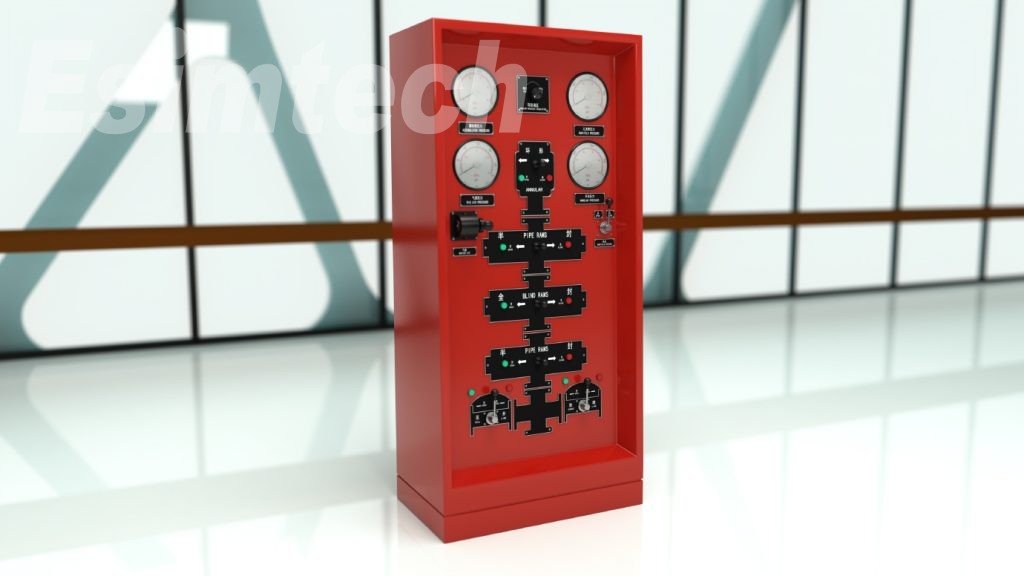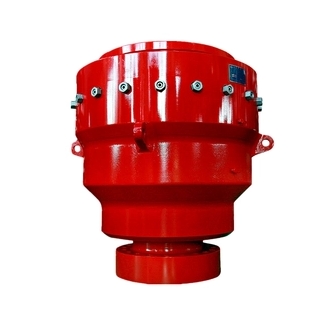In the realm of oil and gas drilling, ensuring safety stands as the utmost priority. Among the critical components safeguarding drilling operations is the Blowout Preventer (BOP), playing a pivotal role in averting uncontrolled hydrocarbon releases from the wellbore, which could lead to catastrophic blowouts. Engineered to swiftly shut down wells during emergencies, BOPs are indispensable elements of drilling equipment.

1. Annular BOP:
The Annular Blowout Preventer, or simply the "annular," assumes the form of a flexible, donut-shaped apparatus capable of sealing around diverse pipe sizes to uphold wellbore integrity. Typically stationed atop the BOP stack, its adaptability in accommodating various pipe sizes renders it suitable for diverse drilling operations.
Function:
Annular BOPs seal around drill pipes, casings, or other tubular components, preventing pressurized fluid leaks.
They play a crucial role in controlling well operations during drilling, tripping, and intervention tasks.
Design:
Comprised of a reinforced rubber element ensconced within a steel structure.
Hydraulic pressure is applied to compress the rubber element, effectuating a seal.
Applications:
Frequently employed as a secondary BOP on drilling rigs.
Critical for maintaining pressure control during well control operations.

2. Ram BOP:
Ram Blowout Preventers are robust, hydraulically-operated mechanisms devised to seal the wellbore using pairs of opposing steel rams, capable of enclosing around the pipe, ensuring a secure seal.
Function:
Ram BOPs employ two sets of opposing rams: annular and pipe rams.
Annular rams seal around irregular shapes, while pipe rams seal around the drill pipe or casing.
Design:
Fashioned from high-strength materials capable of withstanding extreme pressures and temperatures.
Hydraulic systems govern ram operation, facilitating rapid responses in emergencies.
Applications:
Typically situated beneath the annular BOP in the BOP stack.
Vital for wellbore shutdown during kicks or blowouts.
Types of Ram BOPs:
Ram BOPs can be further categorized into blind rams and pipe rams.
1. Blind Rams:
Engineered to completely seal the wellbore when no tubulars are present, utilized during drilling or maintenance activities.
2. Shear Rams:
Equipped with sharp blades capable of cutting through the drill pipe or casing, employed as a last resort in blowout control scenarios, severing the pipe to enable well sealing.
Blind Shear Ram BOP:
These specialized ram BOPs boast a unique purpose: to sever the drill pipe or casing when conventional sealing methods fail to control a blowout.
Function:
Employ cutting blades to shear through the drill pipe or casing, isolating the wellbore.
Serve as a last-resort safety measure to prevent uncontrolled blowouts.
Design:
Engineered with robust shearing mechanisms capable of cutting through thick steel.
Applications:
Typically installed as the last ram in the BOP stack.
Rarely used but critical for extreme well control situations.
Hinged Gate BOP:
Hinged Gate BOPs find utility in workover and well intervention operations, offering a more accessible means of well control for maintenance and repair endeavors.
Function:
Utilize a pair of hinged gates that swing open and close around the pipe.
Provide a quick and reliable method to secure the wellbore during intervention operations.
Design:
Boast a simple, compact design for ease of installation and operation.
Applications:
Commonly employed during workover operations to maintain well control during servicing.
Subsea BOP:
Specially designed for offshore drilling operations, Subsea Blowout Preventers are positioned on the seabed, crucial for preventing blowouts in underwater wells.
Function:
Perform similar functions as surface BOPs but adapted for subsea conditions.
Maintain wellbore integrity and prevent hydrocarbon release into the ocean.
Design:
Built to withstand high pressures, corrosive seawater, and extreme depths.
Remotely operated and connected to the surface by hydraulic control systems.
Applications:
Exclusively utilized in offshore drilling, forming a critical component of deepwater drilling rigs.
Significance of BOPs in Drilling:
The importance of blowout preventers in drilling operations cannot be overstated:
Safety: BOPs safeguard the lives of rig workers, the environment, and valuable drilling equipment, serving as the primary defense against blowouts.
Environmental Protection: Prevents the release of harmful substances into the environment, minimizing ecological damage.
Asset Protection: Safeguards expensive drilling rigs and equipment from damage during blowouts.
Regulatory Compliance: Ensures adherence to strict well control regulations, avoiding legal and financial penalties.
Reputation Management: Demonstrates a commitment to safety and responsible drilling practices, preserving a company's reputation.
Conclusion:
Blowout Preventers are indispensable guardians in drilling, ensuring safety and environmental protection. With various types catering to diverse drilling needs, they offer versatility and reliability. From annular and ram BOPs to blind shear ram, hinged gate, and subsea BOPs, their applications span drilling, well intervention, and workover operations. Their collective objective remains consistent: preventing uncontrolled hydrocarbon releases, maintaining wellbore integrity, and safeguarding workers and the environment.
Esimtech specializes in manufacturing oil and gas simulator equipment, including simulation training equipment for Blowout Preventers (BOP). Should you require such equipment, please don’t hesitate to get in touch with us.







